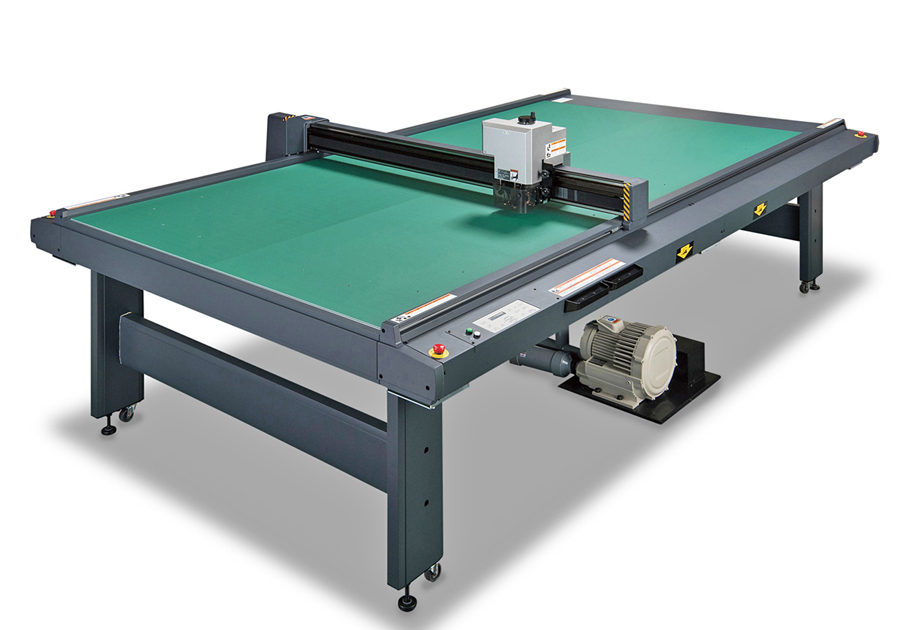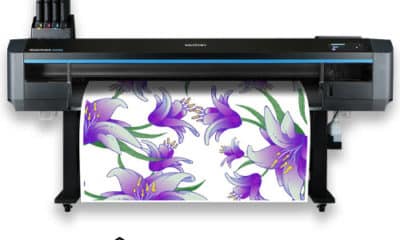Once upon a time, when the first UV flatbed printers hit the market, a strange, router-like device popped up that could take a digitally printed rigid surface and contour-cut it into wonderful shapes like puzzles, airplanes or guitars. Signmakers marveled at the machines, but were presented with very few choices. Fast forward to 2018 and you will find that your options have multiplied almost exponentially. With flatbed printers becoming more and more common, a finishing machine seems a likely addition. Tradeshow booths, for instance, can be instantly designed and created – including the tables and chairs. But with so many choices, where do you even begin to find the right solution?
A great first place to start is to look at your printer first. Is it a flatbed? Is it a roll-to-roll printer or maybe a hybrid that can do both? The manufacturer of your printer may offer a line of finishing machines that complement your printer and you could be looking at a single source of service. Of course, they may not offer a machine that can fit your needs or you may have printers from different manufacturers. In these cases, you will need to look at specific applications in order to make a decision.
WHICH SUBSTRATES?
If, for example, you are almost exclusively printing 4 x 8-ft. boards, then you may not ever require a roll-feed system. Depending on the material you cut, there may not be a compelling reason to acquire an ultra-powerful spindle. Maybe you are just in the packaging business. This can save you some bucks, but it may limit you if you have plans for expansion.
Soft signage is a super-fast growing segment of the industry. It’s also an application where the printed fabric will almost surely have to be cut, and fabric can be tricky. There are two ways the finishing machine companies are addressing the situation. The most common is using a rotary cutter. The other method is to use a high-energy laser. Both will do the job. The cut from the rotary knife will not be sealed but most of the common fabrics used for soft signs will need further finishing (such as hemming) anyway. When the laser cuts, it seals the edges. Also keep in mind that laser cutters require special blankets that protect the table surface. Look for a system that is easy to change out if possible.
Beyond those basics, there are some make-or-break aspects of finishing, particularly in terms of productivity. If you are dealing with a few boards a day, then just about any of the machines on the market will work for you. However, if you have fast printers cranking hundreds of boards a day or bolts and bolts of fabric, make sure that your cool finisher doesn’t become a big bottleneck.
During typical workflow an operator takes a board from the printed stack, places it on the table in the proper zone (if necessary), brings up the cut job on the console, lets the camera scan the print to make sure it’s not skewed, cuts, and then the operator removes the finished piece(s). You can probably see the problem if you’re running a high-volume shop. The companies specializing in finishers can automate practically every aspect of that workflow with automatic loaders, stackers and the like. Barcodes on the prints guide loaders and even kick off the jobs automatically without operator intervention. Cameras that scan the entire table instantly are even eliminating the wait time for registering the scan dots. In other words, if you need that level of productivity, it is available for a price.
Thus, finishing machines are now a fairly common device with a wide range of sizes, capabilities and features. You can get into a low-end device for around $50-$70k. If you need more capabilities, the price will go up. More and more new materials, applications and market segments are emerging, so keep versatility in mind.
Advertisement


 Business Management1 week ago
Business Management1 week ago
 Women in Signs1 week ago
Women in Signs1 week ago
 True Tales2 weeks ago
True Tales2 weeks ago
 Editor's Note5 days ago
Editor's Note5 days ago
 Maggie Harlow2 weeks ago
Maggie Harlow2 weeks ago
 Line Time1 week ago
Line Time1 week ago
 Product Buying + Technology6 days ago
Product Buying + Technology6 days ago
 News2 weeks ago
News2 weeks ago














